
Description
Jimmy Hoffa: Timeline and Key Figures
Timeline of Main Events Related to Jimmy Hoffa
- February 13, 1913: James Riddle Hoffa is born in Brazil, Indiana.
- Early Life: Following the death of his coal miner father, Hoffa leaves school to work in a Detroit warehouse.
- Around 1933: At the age of twenty, Hoffa organizes a strike of dock workers at the Kroger Grocery and Baking Company warehouse in Detroit.
- Mid-20th Century: Hoffa rises through the ranks of the Teamsters union, utilizing strikes, boycotts, and sometimes unlawful means.
- 1957: Dave Beck, the president of the Teamsters, goes to prison. Jimmy Hoffa becomes the President of the International Brotherhood of Teamsters.
- 1964: Under Hoffa’s leadership, the Teamsters union brings nearly all American truck drivers under a single national master freight labor agreement.
- 1967: Jimmy Hoffa is convicted of attempted bribery of a grand juror and sentenced to fifteen years in prison.
- 1971: President Richard Nixon commutes Hoffa’s prison sentence on the condition that he not participate in union activities. Hoffa intends to sue to regain his right to participate in the Teamsters.
- July 30, 1975: Jimmy Hoffa plans to meet Anthony “Tony Jack” Giacalone and Anthony “Tony Pro” Provenzano at the Machus Red Fox restaurant in Bloomfield Hills, Michigan, to settle a feud.
- July 30, 1975, 2:15 PM: Hoffa calls his wife Josephine, stating that no one showed up for the meeting. This is the last time Hoffa is heard from.
- August 4, 1975: Chuckie O’Brien shows up at then-Teamsters President Fitzsimmons’ office, stunning him (the reason for this is not detailed in the provided text).
- 1975: The FBI issues a memo stating that Hoffa’s disappearance is likely connected to his attempts to regain power within the Teamsters union.
- 1982: Jimmy Hoffa is declared legally dead.
- 1990: The FBI takes a strong interest in Detroit area meat packing plants and examines every one. They also examine a gun in Pittsburgh.
- July 24, 1992: The television tabloid show “Current Affair” airs a segment featuring a cloaked man claiming to be a mafia hitman present at Hoffa’s killing. The FBI later identifies, interviews, and polygraphs this individual.
- September 2001: The Detroit News reports that the FBI made a DNA match between a hair believed to be Hoffa’s and one found in a car driven by Chuckie O’Brien on July 30, 1975. O’Brien states he borrowed the car from Joe Giacalone.
- April 2001: A high-power FBI conference is held to discuss the status of the Hoffa case and prosecutorial strategy.
- May 23, 2001: FBI files indicate physical surveillance related to the Hoffa case occurred as late as this date.
- Late 2001 – 2002: The FBI interviews more than a dozen people, pursuing leads in Florida, Indiana, Maryland, North Carolina, Pennsylvania, and Kentucky.
- November 2017: Approximately 1,000 pages of FBI files dealing with Hoffa’s disappearance are released for the first time.
- Files Span: The released FBI files date from 1975 to 2002 and contain approximately 2,360 discernable memos.
Cast of Characters
- James Riddle “Jimmy” Hoffa: An American labor union leader who served as the President of the International Brotherhood of Teamsters from 1957 to 1971. He disappeared on July 30, 1975, and was declared legally dead in 1982. He was attempting to regain power within the Teamsters at the time of his disappearance and had a contentious relationship with Anthony Provenzano.
- Anthony “Tony Jack” Giacalone: A reputed mob enforcer for the Detroit La Cosa Nostra. Hoffa was scheduled to meet him on the day of his disappearance, believing Giacalone would help settle a feud with Anthony Provenzano.
- Anthony “Tony Pro” Provenzano: A New Jersey Teamster boss based in Union City, New Jersey. Hoffa was also scheduled to meet him on the day of his disappearance. They had a known contention.
- Frank Fitzsimmons: The president of the Teamsters union at the time of Hoffa’s disappearance in 1975. Chuckie O’Brien’s unexpected appearance in his office on August 4, 1975, reportedly stunned him.
- Charles “Chuckie” O’Brien: A longtime friend of Jimmy Hoffa, who Hoffa had taken in as a child. In 2001, a hair found in a car O’Brien was driving on the day of Hoffa’s disappearance was reportedly matched to Hoffa’s DNA. O’Brien claimed he borrowed the car from Joe Giacalone. The FBI files indicate Hoffa became disenchanted with O’Brien, who increasingly devoted himself to Anthony Giacalone.
- Dave Beck: The president of the Teamsters union before Jimmy Hoffa. He went to prison in 1957, leading to Hoffa taking over the presidency.
- Richard Nixon: The President of the United States who commuted Jimmy Hoffa’s prison sentence in 1971, with the condition that Hoffa not participate in union activities.
- Josephine Hoffa: Jimmy Hoffa’s wife, whom he called at 2:15 PM on July 30, 1975, stating that no one had shown up for his meeting. This was the last time she heard from him.
- Frank Ragano: Jimmy Hoffa’s attorney. The FBI files contain statements from an informant about him.
- Joe Giacalone: The son of Anthony “Tony Jack” Giacalone. Chuckie O’Brien claimed he borrowed a 1975 Mercury Marquis Brougham from Joe Giacalone on the day of Hoffa’s disappearance.
- Robert Holmes: The president of Teamsters Local 337 in 1975. Chuckie O’Brien claimed he was delivering a frozen salmon to Holmes’ home on the day of Hoffa’s disappearance using Joe Giacalone’s car.
Disappearance of Jimmy Hoffa FBI Files
James Riddle Hoffa was an American labor union leader who served as the President of the International Brotherhood of Teamsters union from 1957 until 1971. It is ironic that his middle name was Riddle, considering that the mystery concerning his fate has become an American legend.
FBI FILES
2,941 pages of FBI files dealing with the disappearance of Jimmy Hoffa. Approximately 1,000 pages were not released until November 2017. Files dates from 1975 to 2002 and contain approximately 2,360 discernable memos.
Highlights from the files include: Files showing that in 1990 the FBI took a strong interest in Detroit area meat packing plants. Files show that the FBI checked out every meatpacking plant in the Detroit area. Files indicate an examination of a gun in Pittsburgh in 1990. The files show that the FBI interviewed more than a dozen people in late 2001 and 2002, pursuing leads in Florida, Indiana, Maryland, North Carolina, Pennsylvania and Kentucky.
Documents chronicle the contention between Jimmy Hoffa and Anthony Provenzano. Details about Hoffa’s activities in the days before his disappearance.
FBI files tells of Jimmy Hoffa’s growing disenchantment with Chuckie O’Brien and O’Brien’s increasing devotion to Anthony Giacalone. FBI files showed that on August 4, 1975, O’Brien stunned then-Teamsters President Fitzsimmons by showing up at Fitzsimmons’ office.
Statements from an informant about Jimmy Hoffa’s attorney Frank Ragano.
Documents shows the Bureau’s interest in a 7/24/92 airing of the television tabloid show “Current Affair”, in which a man, whose identity was cloaked, claimed to be a mafia hitman and says he was present when Jimmy Hoffa was killed. The FBI was able to identify, interview, and give a polygraph exam to the man.
Documents indicate a high-power FBI conference took place in April 2001 to discuss the status of the case and prosecutorial strategy.
Files indicate physical surveillance dealing with the case as late as May 23, 2001.
ABOUT JAMES RIDDLE HOFFA
James Riddle Hoffa was born on February 13, 1913 in Brazil, Indiana. After Jimmy Hoffa’s father, a cool miner, died, Hoffa left school to go to work in a Detroit warehouse. At the age of twenty he organized a strike of dock workers at the Kroger Grocery and Baking Company warehouse in Detroit. Hoffa quickly rose through the ranks of the Teamsters union by the skillful use of strikes, boycotts, and sometimes less lawful means to archive the objectives of the union.
When teamsters’ president Dave Beck went to prison, Hoffa became president of the union in 1957. By 1964 Hoffa and the Teamsters union brought nearly all American truck drivers under a single national master freight labor agreement. Jimmy Hoffa was convicted of attempted bribery of a grand juror in 1967 and was sentenced to fifteen years in prison. In 1971, President Richard Nixon commuted his sentence on the condition that he not participate in union activities. Hoffa was planning to sue to gain the right re-enter union activities and to regain his place in the Teamsters.
On July 30, 1975, Jimmy Hoffa planned to meet Anthony “Tony Jack” Giacalone, a reputed mob enforcer for the Detroit La Costa Nostra and New Jersey Teamster boss Anthony “Tony Pro” Provenzano of Union City, New Jersey, at Machus Red Fox restaurant on Telegraph Road in Bloomfield Hills, Michigan. Hoffa believed Giacalone had set up the meeting to help settle a feud between Hoffa and Provenzano. At 2:15 p.m. Hoffa phoned his wife Josephine, telling her that no one showed up for his meeting. This is the last time Hoffa was heard from. In 1975, the FBI said in a memo that the disappearance was probably connected to Hoffa’s attempts to regain power within the Teamsters union. In 1982 Jimmy Hoffa was declared legally dead.
In September of 2001 the Detroit News reported that the FBI made a DNA match between a hair from Hoffa with one found in a car driven by Charles “Chuckie” O’Brien on July 30, 1975. Chuckie O’Brien was a longtime friend of Hoffa. O’Brien was taken in by Hoffa as a child when O’Brien’s father died when he was six years old. Many considered O’Brien and Hoffa to have been like father and son. O’Brien says the car he was driving, a 1975 Mercury Marquis Brougham, was borrowed from Joe Giacalone, the son of Anthony Giacalone. O’Brien says that he borrowed the car to deliver a frozen salmon to the home of Robert Holmes, then president of Teamsters Local 337.






Related products
-
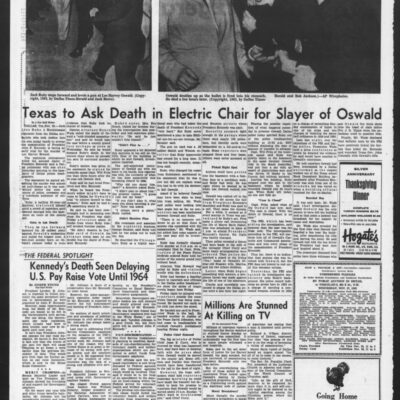
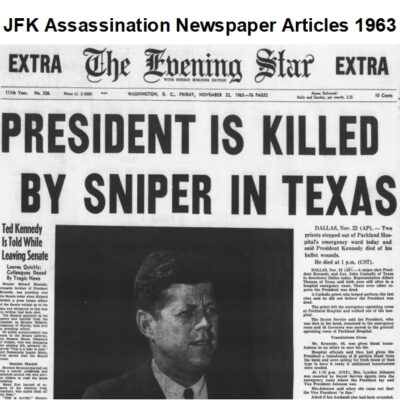
1963 Newspaper Articles on JFK Assassination
$3.94 Add to Cart -
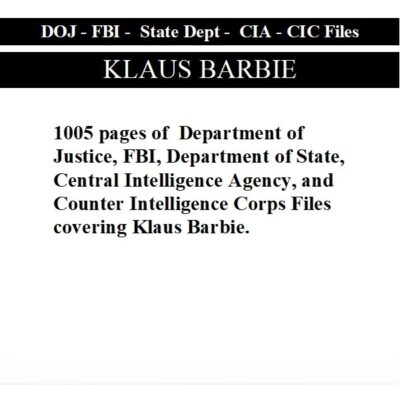
Klaus Barbie: Department of Justice – FBI – Counter Intelligence Corps Files
$19.50 Add to Cart -
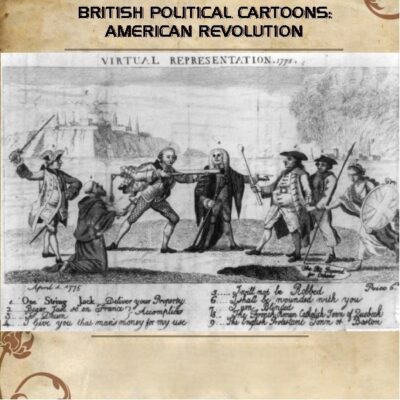
American Revolution: British Political Cartoons
$19.50 Add to Cart -

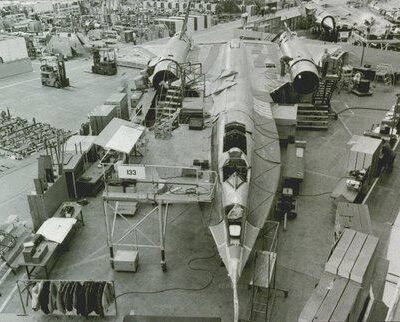
A12 CIA Spy Plane: Lockheed Blackbird Project Oxcart Files
$19.50 Add to Cart